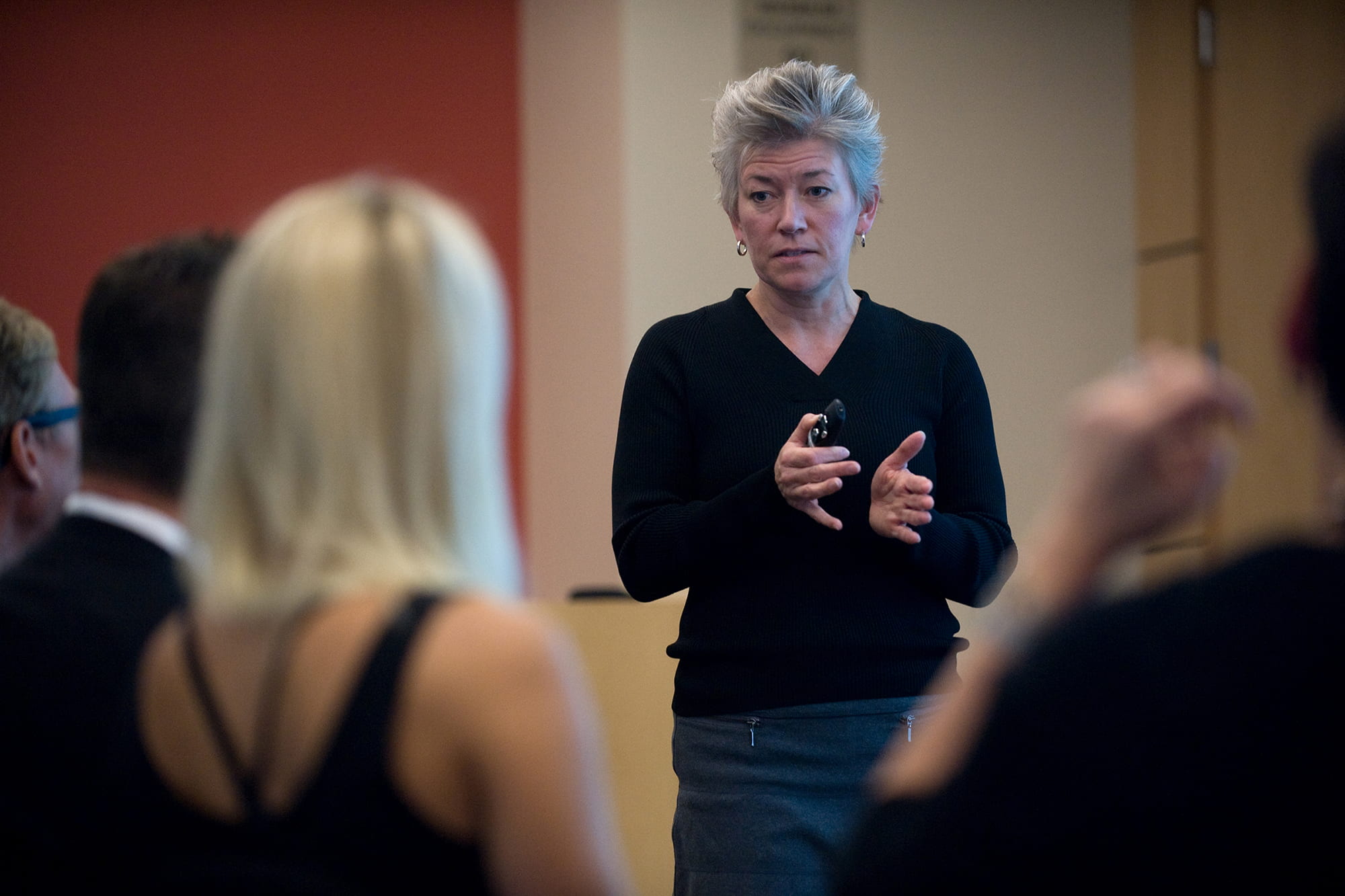Healing from within
UCI stem cell researcher confronts science denialism, deceptive clinics and dwindling funding

In the 1986 “Star Trek” movie, there’s a scene in which Dr. Leonard McCoy gives a woman a pill to “regrow” her kidney, miraculously curing her of an ailment from the inside. When Aileen Anderson, director of UCI’s Sue & Bill Gross Stem Cell Research Center, first saw the movie three decades ago, the idea of fixing an organ internally seemed like a sci-fi miracle.
Now she spends her days in the lab trying to make such movie magic into a medical reality.
Anderson started in the field in the early 2000s, during stem cells’ earliest days. She worked on spinal cord injuries and how the immune system responds after neurotrauma and developed a useful transplant model for studying stem cells in the nervous system.
Even though Anderson didn’t consider herself a stem cell scientist at the time, colleagues interested in the budding discipline, she says, began “knocking on my door,” asking to run studies using her model. Twenty years later, she’s a leading stem cell investigator in California, a global hub of such research.
Under Anderson, the Sue & Bill Gross Stem Cell Research Center is focused on not just basic science, but also conducting clinical trials, trying to determine how stem cells can benefit people with retina damage, spinal injuries and other conditions. Its lab teams are working on the hurdle of “reprogramming” a body to not reject stem cells from a foreign source, and they’re hoping to eventually perfect a “Star Trek”-inspired method of tapping into a body’s natural reserve of stem cells, harnessing their power to repair organs from the inside.
But for all its medical potential, stem cell research has met its share of controversy over the past two decades. Anderson recently won a Confronting Extremism grant of about $20,000 through UCI’s Provost Initiative on Understanding & Engaging With Extremism, which will support a public outreach project on science denialism. It’s a huge problem in the stem cell community, she says, due in part to the growth of unregulated clinics selling unrealistic “cures” they claim are derived from stem cells. More than 40 such centers have opened between Los Angeles and San Diego in the last decade alone.
“The medical practitioners doing this are deliberately misleading [the public] and undermining the efforts of scientists to conduct responsible clinical trials on stem cells. These clinics set their patients up with unrealistic expectations and foster the narrative that we don’t need to do further stem cell research because treatments already exist,” Anderson says.
“People without viable medical options pay large sums of money for treatment at these unlicensed clinics, hoping that they’re getting cutting-edge, stem cell-based therapy that will cure their cancer, Parkinson’s, Huntington’s, brain injury, etc. We want to inform people about the limitations of stem cell research and communicate what is and isn’t currently medically possible.”
To do that, Anderson and her team have devised a two-part program. First they’ll organize an education forum for scientists, researchers and academics in the stem cell field to raise awareness of the issues surrounding research today and those “alternative” clinics. Then they’ll work on creating websites and distributing information so that people can do their own research on these places before going to them for expensive, ineffective treatments.
Opening channels of communication about stem cell research will be especially important over the coming years, which will prove a critical juncture for Golden State specialists. The California Institute for Regenerative Medicine, established through a 2004 ballot initiative that provided $3 billion in stem cell research funding, has been allocating grants statewide but will soon run out of money. Stem cell activists are now crafting a measure for the 2020 ballot that would provide even more financial support for research.
Part of the original funding went to training, facilities and “brick and mortar” infrastructure – including the Sue & Bill Gross Stem Cell Research Center where Anderson spends her time. If the new proposition passes, it could give scientists like her the means to conduct additional clinical trials, publish additional findings and, ideally, find effective treatments for myriad conditions. CIRM, which has increasingly focused on translating successful basic research to the clinic, is currently running 48 clinical trials in California and wants to run more.
“We hope that California will sustain this, because stem cell research is the future of medicine,” Anderson says. “And we’re really just getting started.”